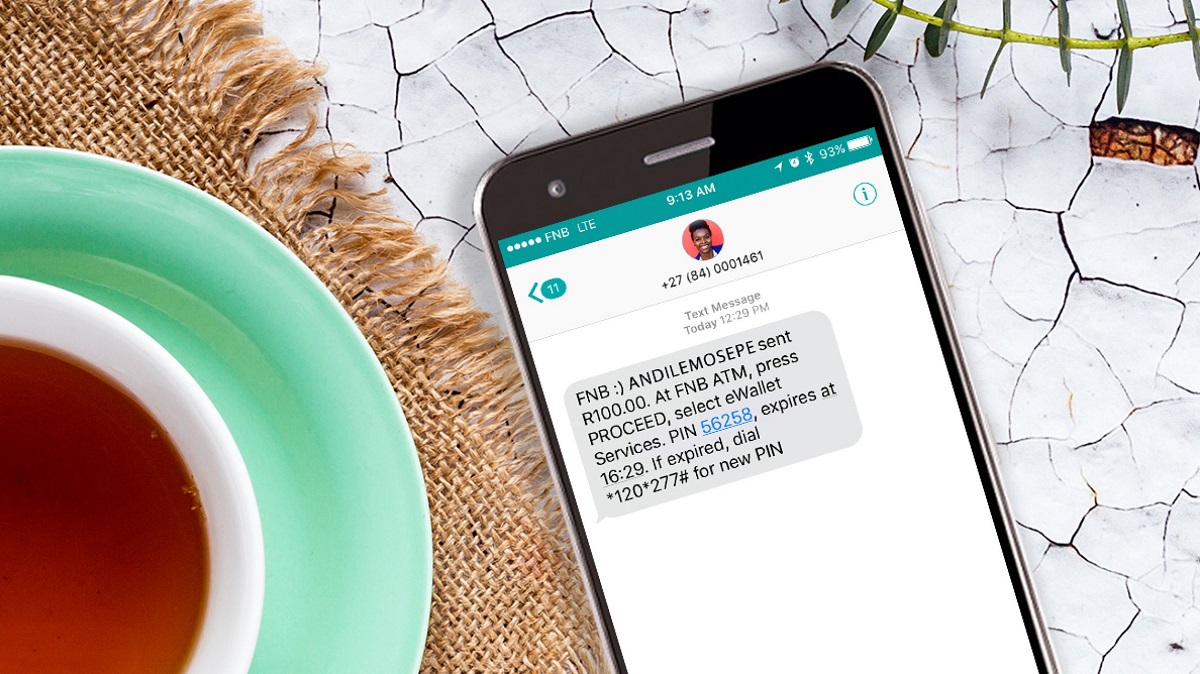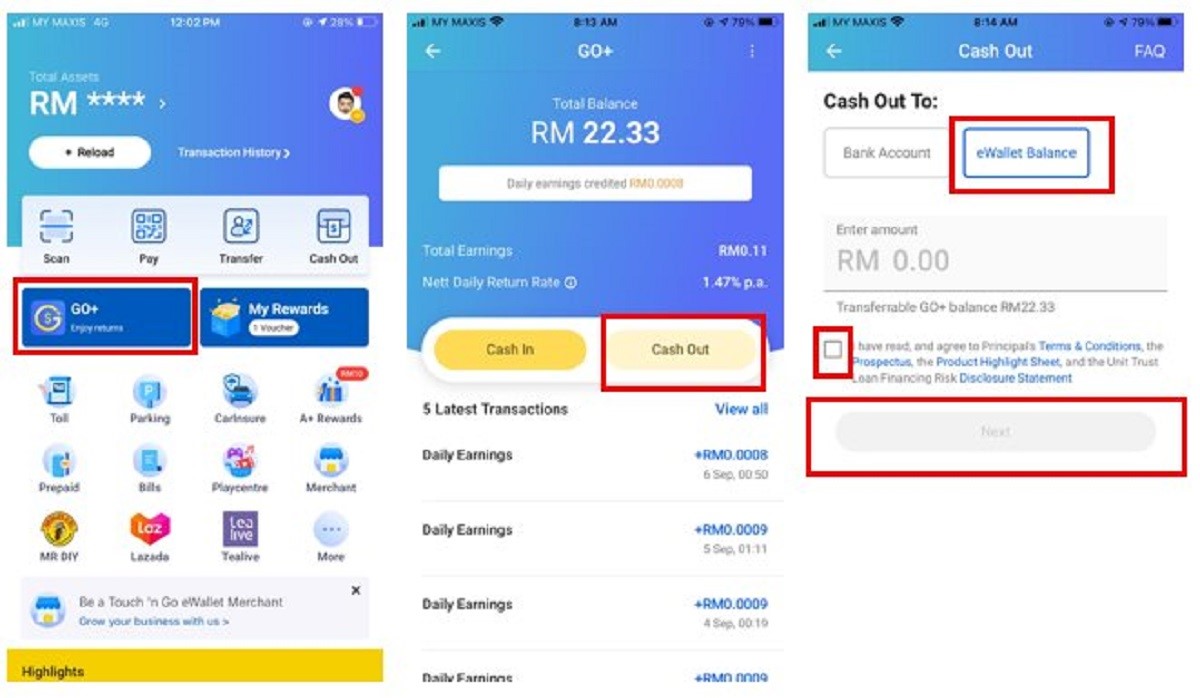What is Ewallet?
Ewallet, also known as electronic wallet or digital wallet, is a virtual wallet that allows individuals to store, manage, and securely transact money online. It acts as a digital counterpart of a physical wallet, providing a convenient and secure way to make payments, transfer funds, and conduct financial transactions without the need for physical cash or traditional banking methods.
An Ewallet is typically an online service or mobile application that securely stores various forms of payment information, such as credit card details, debit card information, and bank account numbers. By linking these payment sources to your Ewallet account, you can easily access and use them to make online purchases, pay bills, and send money to others.
The main advantage of using an Ewallet is the convenience it offers. With just a few taps or clicks, you can complete transactions from the comfort of your home or on-the-go. It eliminates the need to carry physical cash or credit cards, making it a convenient option for quick and hassle-free payments.
Ewallets are widely used for various purposes, including online shopping, bill payments, peer-to-peer transfers, and even in physical stores by scanning QR codes or using Near Field Communication (NFC) technology. They are accepted by a large number of merchants and service providers, making it easier to transact and manage your finances across a wide range of platforms.
Furthermore, Ewallets offer a level of security that traditional payment methods may lack. They utilize encryption and secure authentication protocols to protect your personal and financial information. This helps to minimize the risk of unauthorized access and fraud, providing users with peace of mind when conducting online transactions.
Overall, Ewallets have revolutionized the way we handle our finances by simplifying and streamlining the payment process. Whether you’re shopping online, paying bills, or sending money to friends and family, an Ewallet offers a convenient and secure solution that enhances the way we manage our money in the digital age.
How Does Ewallet Work?
Ewallets work by utilizing advanced technology to securely store and manage your payment information, allowing you to make online transactions with ease. Here’s a step-by-step breakdown of how Ewallets work:
- Account Setup: To start using an Ewallet, you need to create an account with a trusted Ewallet provider. This typically involves providing your personal details, verifying your identity, and setting up a secure password or PIN.
- Linking Payment Sources: Once your account is set up, you can link your Ewallet to your preferred payment sources. This can include credit cards, debit cards, and bank accounts. Some Ewallets also support alternative payment methods like cryptocurrency.
- Adding Funds: To use your Ewallet for online payments, you may need to add funds to your account. This can be done by transferring money from your linked bank accounts or by receiving payments from others.
- Secure Transactions: When making a purchase or payment online, you can choose to use your Ewallet as the payment method. The Ewallet securely communicates with the merchant’s payment system, transmitting the necessary payment details without exposing your sensitive information.
- Authentication: Depending on the Ewallet provider and the transaction’s security settings, you may be required to authenticate the transaction using a password, PIN, fingerprint, or facial recognition.
- Confirmation: Once the transaction is authenticated and approved, you will receive confirmation of the payment. This can be in the form of an email, SMS, or notification within the Ewallet app.
- Managing Transactions: Ewallets provide features to help you track and manage your transactions. You can view your transaction history, monitor your account balance, set spending limits, and receive notifications for any activity related to your Ewallet account.
Ewallets operate on a secure infrastructure, using encryption and other robust security measures to protect your financial information. They provide a convenient and reliable way to make online payments, whether you’re shopping, paying bills, or sending money to friends and family.
Setting up an Ewallet Account
Setting up an Ewallet account is a straightforward process that allows you to access the benefits and convenience of digital payments. Here are the steps to get started:
- Select an Ewallet Provider: Research and choose a reputable Ewallet provider that meets your needs. Consider factors such as security measures, supported payment methods, fees, and user reviews.
- Download the Ewallet App: If the Ewallet provider offers a mobile app, download it from the official app store onto your smartphone or tablet. Alternatively, if the Ewallet is web-based, you can access it through the provider’s website.
- Create an Account: Open the Ewallet app or website and select the option to create a new account. Provide the required information, which may include your name, email address, and phone number. You may also need to create a secure password or PIN for account access.
- Verify Your Identity: Some Ewallet providers require identity verification to ensure the security of your account. This can be done by uploading a scan or photo of your identification document, such as a passport or driver’s license.
- Link Payment Sources: To fund your Ewallet account, link your preferred payment sources. This can include credit cards, debit cards, or bank accounts. Follow the instructions provided by the Ewallet provider to safely link your desired payment methods.
- Set up Security Features: To enhance the security of your Ewallet account, enable any additional security features offered by the provider. This could include two-factor authentication, biometric login options (such as fingerprint or facial recognition), or transaction notifications.
- Read and Understand the Terms and Conditions: Before completing the account setup, carefully read and understand the Ewallet provider’s terms and conditions. Familiarize yourself with any fees, transaction limits, and dispute resolution processes that may apply to your account.
- Start Using Your Ewallet: Once your account is set up, you’re ready to start using your Ewallet for online payments, money transfers, and other financial transactions. Familiarize yourself with the app’s features and explore the various ways you can utilize your Ewallet for convenience and flexibility.
By following these steps, you can easily set up an Ewallet account and begin enjoying the benefits of digital payments in a secure and user-friendly manner.
Adding Funds to Your Ewallet
One of the key features of an Ewallet is the ability to add funds to your account, allowing you to make online purchases, pay bills, and send money to others. Here’s how you can add funds to your Ewallet:
- Link a Bank Account: To add funds to your Ewallet, you can link your bank account. By providing your bank account information, you can transfer money from your bank account to your Ewallet.
- Link a Credit/Debit Card: Another option is to link a credit or debit card to your Ewallet. This allows you to add funds by transferring money from your card to your Ewallet.
- Receive Payments: If someone owes you money or wants to send you funds, you can receive payments directly into your Ewallet. The sender needs to know your Ewallet details, such as your email address or phone number, to initiate the payment.
- Bank Transfers: Some Ewallet providers allow direct bank transfers to add funds to your account. You can initiate a transfer from your bank account to your Ewallet using the Ewallet provider’s banking details.
- Load Cash at Authorized Locations: Certain Ewallets provide the option to load cash into your account. You can visit authorized locations such as banks, ATMs, or partner retailers to deposit cash, which will then be credited to your Ewallet.
- Receive Payments from Ewallet Users: If someone you know also uses the same Ewallet, they can transfer funds to your account within the Ewallet platform. This is a convenient way to receive money from friends, family, or business associates.
It’s important to note that some Ewallet providers may charge fees for certain funding methods or transactions. Be sure to familiarize yourself with the fees and charges associated with adding funds to your Ewallet account. Additionally, verify the availability of the funding methods with your Ewallet provider as they may vary based on your location and the Ewallet service you are using.
By having funds in your Ewallet account, you can easily make online payments, perform financial transactions, and enjoy the convenience of digital money management. Keep your Ewallet sufficiently funded to ensure seamless transactions and effortless financial management.
Using Ewallet for Online Payments
Ewallets provide a convenient, secure, and efficient way to make online payments for various goods and services. Here’s how you can use your Ewallet for online payments:
- Select Ewallet as Payment Method: When checking out on an online store or making a payment on a website, look for the option to pay with an Ewallet. Typically, you will see a logo or icon representing the Ewallet you have linked to your account.
- Enter Payment Details: Upon selecting the Ewallet option, you may be redirected to the Ewallet provider’s platform or asked to enter your Ewallet login credentials. Provide the necessary details to confirm your identity and initiate the payment process.
- Authorize the Payment: Depending on the security settings of your Ewallet account, you may need to authenticate the payment using a password, PIN, fingerprint, or facial recognition. This ensures that only authorized individuals can complete the transaction.
- Confirm the Payment: Once the payment is authorized, review the transaction details and confirm the payment. You might receive a summary of the purchase, including the amount, recipient, and any additional charges or fees.
- Receive Payment Confirmation: After the payment is successfully processed, both you as the payer and the recipient will receive confirmation of the transaction. This confirmation could be in the form of an email, SMS, or notification within the Ewallet app.
- Keep Track of Payments: Ewallets typically provide transaction history features that allow you to monitor and track your online payments. You can view your payment history, check the status of transactions, and access detailed information about previous payments.
- Enjoy the Benefits: By using your Ewallet for online payments, you can experience various benefits such as convenience, speed, and enhanced security. Ewallets often offer additional features like rewards programs, cashbacks, and discounts, which can help you save money and earn incentives while making online purchases.
It’s important to note that Ewallet payment availability may vary among different online platforms and merchants. While Ewallets are widely accepted by a large number of online retailers, it’s always a good idea to check if they support your preferred Ewallet before making a purchase.
Using your Ewallet for online payments provides a seamless and efficient way to make purchases, ensuring a hassle-free shopping experience in the digital realm.
Sending and Receiving Money with Ewallet
One of the key features of an Ewallet is the ability to send and receive money electronically, making it a convenient and quick method for monetary transactions. Here’s how you can use your Ewallet to send and receive money:
- Sending Money: To send money to someone, you typically need their Ewallet details, such as their email address or mobile number. Open your Ewallet app or access the Ewallet website, navigate to the “Send Money” or “Transfer Funds” section, and enter the recipient’s details along with the amount you wish to send. Review the transaction details and then authorize the payment.
- Receiving Money: When someone wants to send you money using their Ewallet, they will need your Ewallet details. Share your Ewallet email address or mobile number with the sender, and they can initiate the transfer from their Ewallet account by entering your details and the desired amount. Once the transaction is processed, you will receive the funds in your Ewallet account.
- Peer-to-Peer Transfers: Many Ewallets offer peer-to-peer transfer functionality, allowing you to send money directly to another user of the same Ewallet platform. This enables you to split bills, pay back borrowed money, or send funds to friends and family effortlessly. To perform a peer-to-peer transfer, you usually need the recipient’s Ewallet details or contact information.
- Payment Requests: Some Ewallets allow you to send payment requests to individuals or businesses. This feature is especially useful for requesting reimbursement or asking for payment for goods or services rendered. Simply generate a payment request through your Ewallet and send it to the payer. They can then review and approve the request to initiate the payment.
- Transaction Tracking: Ewallets provide features to help you track your transactions. You can view your transaction history, including details of the sender or recipient, date and time of the transaction, and the transaction amount. This allows you to keep an organized record of the money you have sent and received.
- Security Measures: Ewallet providers implement robust security measures to protect the privacy and safety of your transactions. They often use encryption, secure protocols, and authentication methods to safeguard your funds and personal information. However, it’s essential to follow best practices and keep your Ewallet login details and authentication methods secure to avoid unauthorized access to your account.
Sending and receiving money with an Ewallet is quick, efficient, and eliminates the need for physical cash or traditional methods of transferring funds. It offers a convenient way to manage your finances and conduct financial transactions in the digital age.
Ewallet Security Measures
Ewallet providers prioritize the security of their users’ funds and personal information by implementing various measures to protect against fraud and unauthorized access. Here are some of the key security measures employed by Ewallets:
- Encryption: Ewallets use encryption technology to secure the communication and storage of sensitive data. This ensures that information, such as account details, transaction history, and payment data, is transmitted and stored securely.
- Two-Factor Authentication (2FA): Many Ewallets offer the option to enable two-factor authentication, adding an extra layer of security to the account. This typically involves an additional verification step, such as a one-time password (OTP) sent to a registered mobile number or the use of biometric authentication.
- Fraud Detection Systems: Ewallet providers employ robust fraud detection systems to monitor transaction patterns, identify suspicious activity, and prevent fraudulent transactions. These systems use advanced algorithms to analyze transaction data and detect any deviations from normal spending behavior.
- Secure Login: Ewallets require users to create secure login credentials, such as strong passwords and personal identification numbers (PINs). Additionally, some Ewallets support biometric login methods, such as fingerprint or facial recognition, to provide an extra layer of authentication.
- Device Authorization: When using an Ewallet on a new device or browser, additional authorization may be required. This can involve providing a verification code sent to a registered email or mobile number, ensuring that only authorized devices can access the Ewallet account.
- Transaction Notifications: Ewallets send real-time notifications to users for various activities, such as successful payments, account changes, and login attempts. These notifications allow users to quickly identify any unauthorized access or suspicious activity and take appropriate action.
- Secure Connections: Ewallets use secure connections, typically using Secure Sockets Layer (SSL) or Transport Layer Security (TLS) protocols, to protect the transmission of data between the user’s device and the Ewallet servers. This ensures that the information exchanged during transactions is encrypted and cannot be intercepted by malicious actors.
As a user, it’s vital to follow best practices to keep your Ewallet account secure. This includes setting a strong password, regularly updating it, and not sharing your login credentials with anyone. Furthermore, it’s recommended to enable any available security features offered by your Ewallet provider and to keep your devices and operating systems updated with the latest security patches.
Overall, Ewallets strive to provide a secure environment for users to manage their funds and conduct financial transactions. The implementation of robust security measures ensures that your money and personal information are protected while using an Ewallet.
Ewallet Fees and Charges
Ewallet providers may impose fees and charges for certain transactions and services. It’s important to familiarize yourself with these fees to understand the cost structure of using an Ewallet. Here are some common fees and charges associated with Ewallets:
- Account Setup: Most Ewallet providers do not charge a fee to create an account. However, it’s advisable to check if any setup or registration fees apply to ensure there are no unexpected charges.
- Transaction Fees: Some Ewallets may charge a transaction fee when sending money to another Ewallet user or making purchases. This fee is usually a percentage of the transaction amount or a flat fee, depending on the Ewallet provider’s fee structure.
- Withdrawal Fees: If you need to withdraw funds from your Ewallet account to a linked bank account, the Ewallet provider may charge a withdrawal fee. This fee can vary depending on factors such as the withdrawal amount and the destination bank.
- Exchange or Conversion Fees: If you make transactions in a different currency than the currency of your Ewallet account, exchange or conversion fees may apply. These fees cover the costs associated with converting currencies and can vary depending on the Ewallet provider’s exchange rate and fee structure.
- Inactivity Fees: Some Ewallets charge an inactivity fee if your Ewallet account remains dormant for an extended period. This fee is typically charged to accounts that have had no transactions or activity for a specified period, such as 6 or 12 months.
- Additional Services: Ewallet providers may offer additional services beyond simple transactions, such as bill payments, prepaid card top-ups, or currency transfers. Each of these additional services may have its own associated fees and charges, which should be clearly outlined by the Ewallet provider.
It’s important to review the fee schedule provided by your chosen Ewallet provider and understand the cost implications of using their services. Be mindful of any potential hidden fees or charges, and consider the overall value and convenience the Ewallet offers compared to traditional payment methods.
Additionally, keep in mind that Ewallet fees and charges can vary among different providers, so it’s always advisable to compare options and choose the one that suits your needs and budget.
Ewallet Alternatives
While Ewallets offer convenience and flexibility, there are other digital payment methods that you can consider as alternatives. Here are a few popular options:
- Mobile Payment Apps: Mobile payment apps, such as Apple Pay, Google Pay, and Samsung Pay, allow you to link your credit or debit cards to your smartphone and make payments at participating stores and online platforms. These apps utilize Near Field Communication (NFC) or QR codes for contactless payments.
- Bank Apps: Many banks offer their own mobile apps that allow you to make payments, transfer funds, and manage your finances digitally. These apps often provide similar functionality to Ewallets, allowing you to make mobile payments and send money to other bank account holders.
- Peer-to-Peer (P2P) Payment Services: P2P payment services like PayPal, Venmo, and Zelle enable you to send money directly to individuals using their email address or mobile number. These services often offer fast transfers and are widely accepted by merchants and companies.
- Cryptocurrency Wallets: For those interested in digital currencies, cryptocurrency wallets provide a secure way to store and transact with cryptocurrencies, such as Bitcoin and Ethereum. These wallets utilize blockchain technology for secure and transparent transactions.
- Prepaid Cards: Prepaid cards, such as prepaid debit cards, allow you to load funds onto a card and use it for online or in-person purchases. These cards are not directly linked to your bank account and provide an alternative payment method that is widely accepted.
- Contactless Cards: Contactless payment cards, commonly using near-field communication (NFC) technology, allow you to tap your card on a payment terminal to complete a transaction. These cards are issued by banks and provide a convenient and secure payment method.
When choosing an alternative to an Ewallet, consider the availability of the payment method in your region, the acceptance among merchants, security features, transaction fees, and the convenience it offers for your specific needs.
It’s worth noting that some Ewallet providers also offer additional functionality that overlaps with these alternative payment methods. Therefore, carefully evaluate the features and benefits of each option to determine the best fit for your digital payment needs.





















